Colocasia As A Houseplant – Here’s How You Can Grow Taro In The Right Spot Indoors
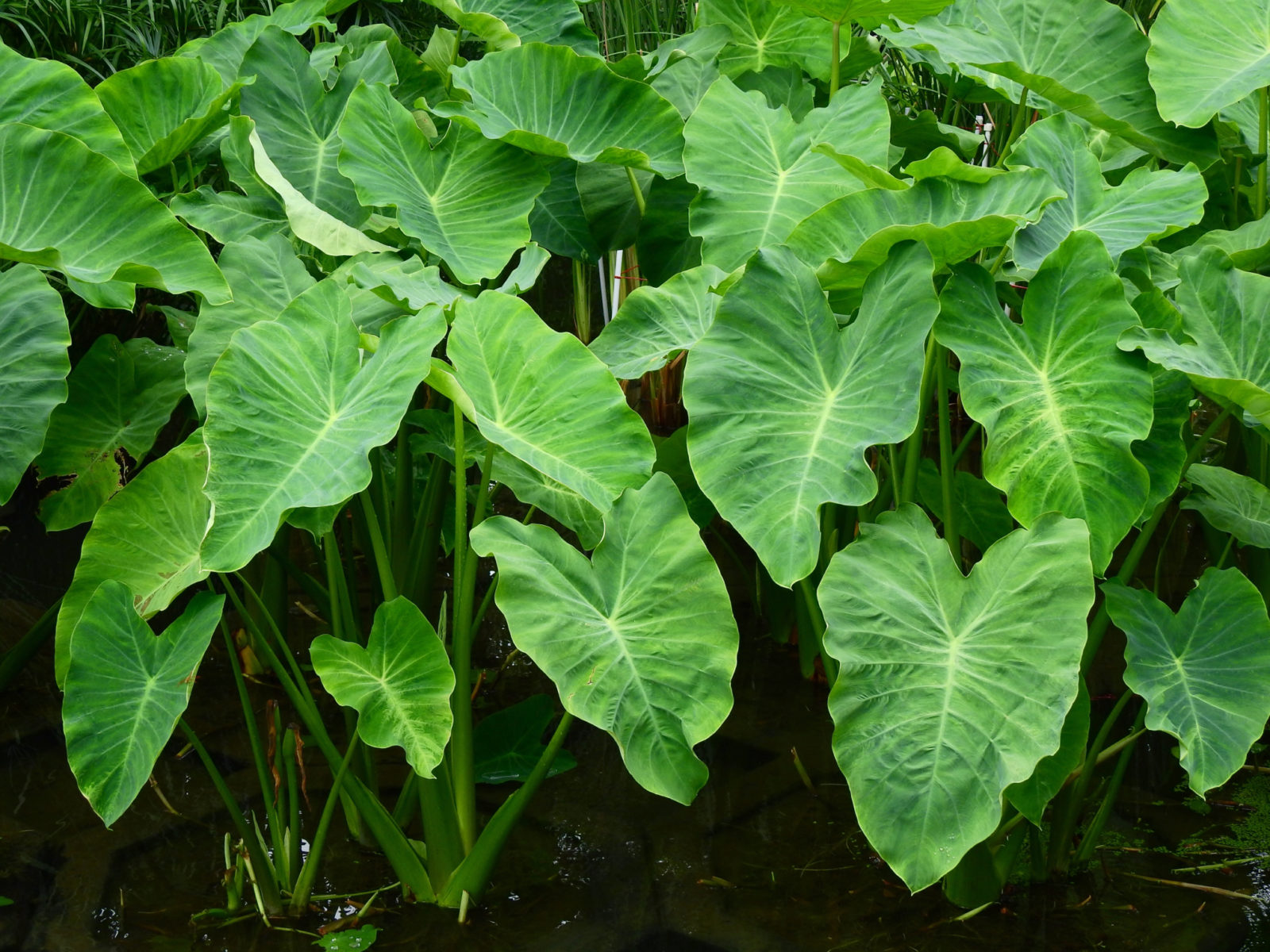
PERENNIALS > COLOCASIA > INDOORS

Elizabeth is a Permaculture Garden Designer, Sustainability Consultant and Professional Writer, working as an advocate for positive change. She graduated from the University of St. Andrews with an MA in English and Philosophy and obtained a Diploma in Applied Permaculture Design from the Permaculture Association.
Reviewed By COLIN SKELLY

Colin is a Horticulturist and Horticultural Consultant with experience in a range of practical and managerial roles across heritage, commercial and public horticulture. He holds the Royal Horticultural Society’s Master of Horticulture award and has a particular interest in horticultural ecology and naturalistic planting for habitat and climate resilience.
COLOCASIA GUIDES
Container Growing
Indoors Growing
Propagation
Varieties
Winter Care
Colocasia is a dramatic and attractive foliage plant native to much warmer zones, but it can be grown successfully in the UK.
This is a plant which can be placed outdoors in a warm and sheltered spot over the summer months if you have a suitable place in your garden.
However, if you do not have a suitable location in your garden, or do not have a garden at all, you may be wondering if you can grow colocasia, also known as elephant ear or taro, as a houseplant.
Can You Grow Colocasia As A Houseplant?
The good news is that you can enjoy these tender perennials as houseplants year-round.
You don’t necessarily have to place them outside in a garden over the summer months.
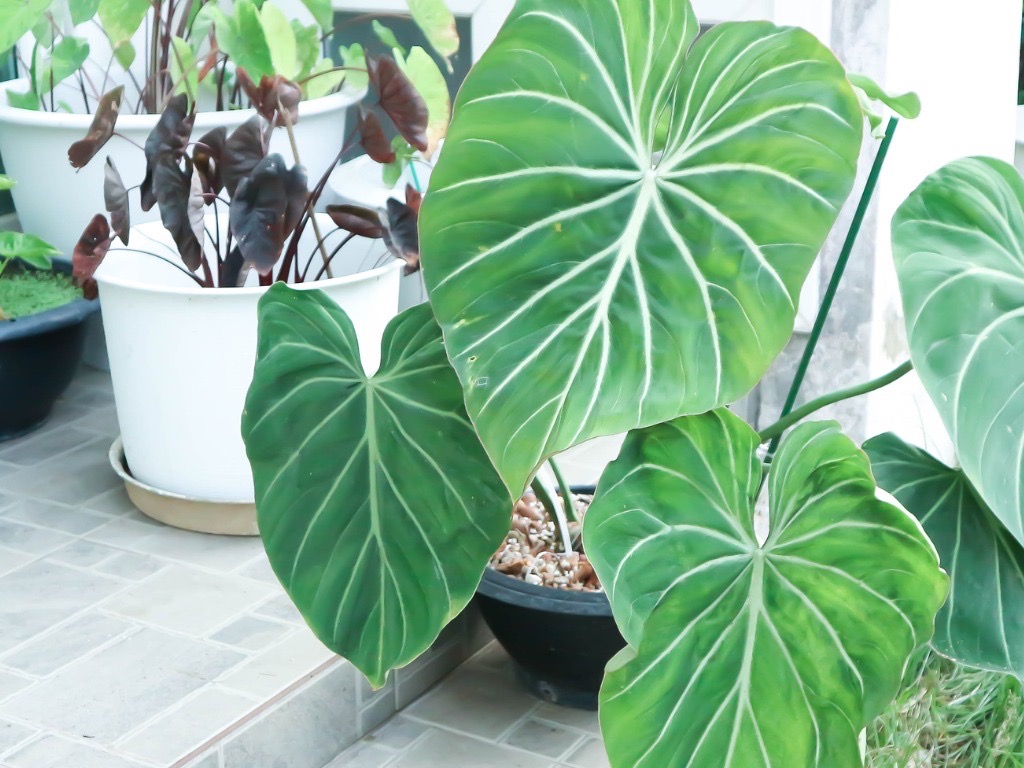
However, colocasias do need to be provided with certain specific conditions to thrive.
You need to place them in the right location indoors and care for them correctly, which we explain how to do below.
Indoors Growing Conditions
If you would like to grow colocasia indoors, the most important thing is to provide the right growing conditions.
Light
Colocasia grown as houseplants needs a location in bright, indirect light.
Temperature
These plants require warm conditions to thrive.
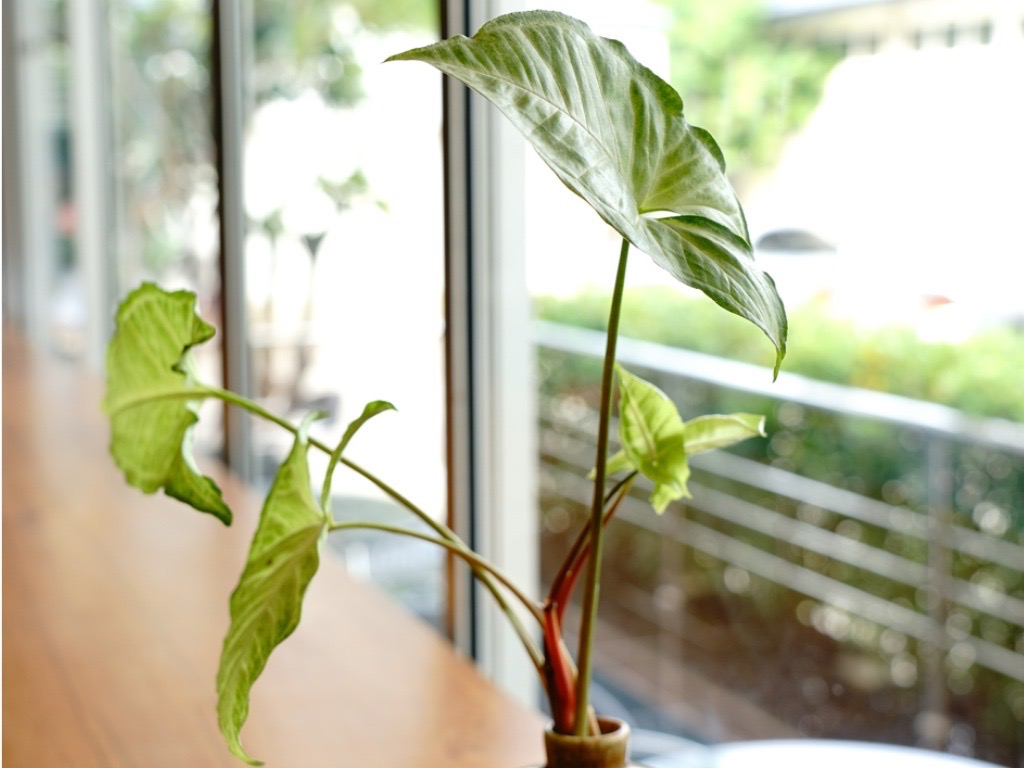
To keep them in active growth year-round, you will need to be able to provide temperatures of around 20°C over the winter months in order to prevent the plant from losing its leaves and going dormant over the winter period.
Humidity
Humidity is also a crucial thing to consider – as South-Asian natives, Colocasia requires a humid atmosphere.
A location in a bright, steamy bathroom, near the kitchen sink, or in a humid conservatory can be ideal.
Container Conditions
Choose a container for your colocasia which is large enough to accommodate the plant’s root ball.
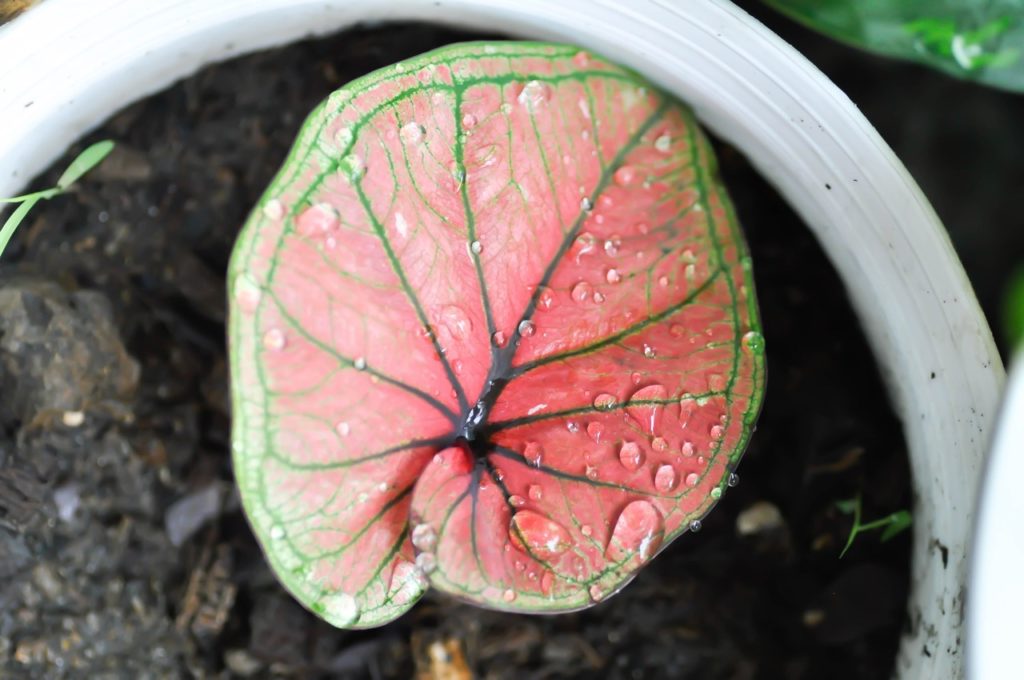
Corms should be planted in a pot at least 25cm in diameter and mature plants will usually need a pot around 40-50cm in width and depth.
Select a container which is good at retaining moisture, such as a glazed ceramic pot, rather than a terracotta one which will lose water more quickly.
Soil
Colocasia needs a moist, humus-rich and fertile potting mix.
A peat-free multi-purpose compost or potting mix will work well.
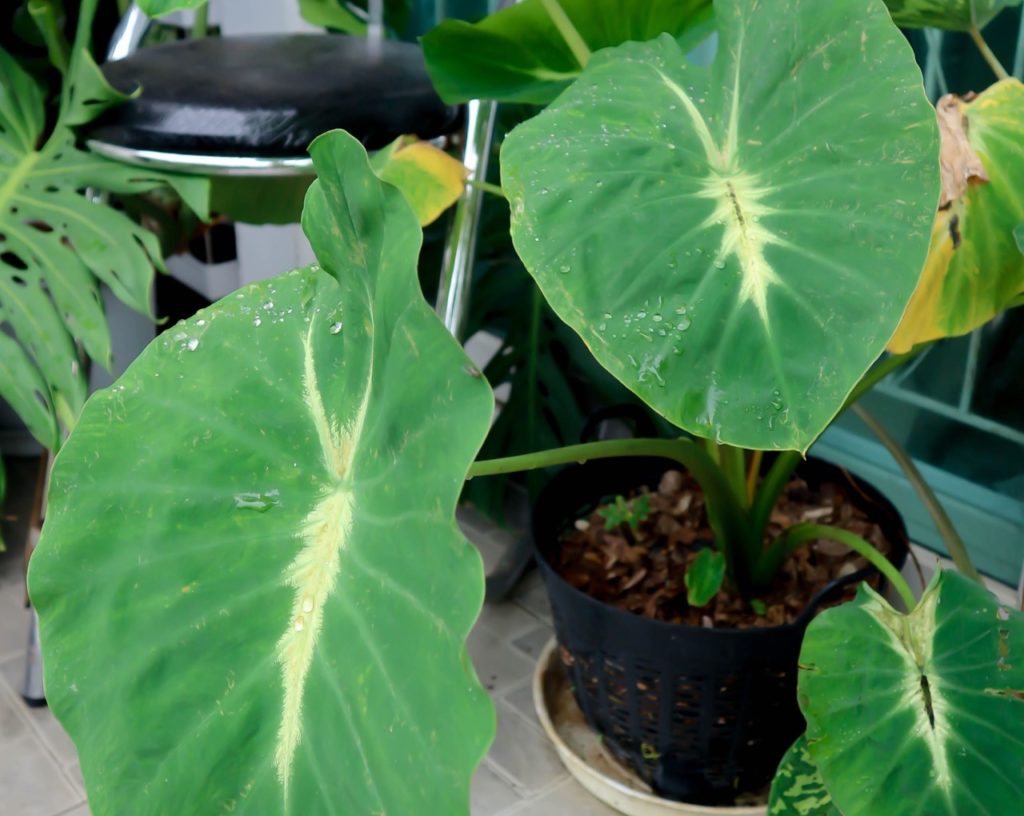
Mulch over the top of the container with some homemade compost or other organic material for moisture retention and for fertility for these relatively hungry plants.
Ongoing Care
As long as you have chosen a suitable spot to grow colocasia as a houseplant, you should find it reasonably easy to care for over time.
Watering
Water to make sure that the growing medium remains consistently moist.
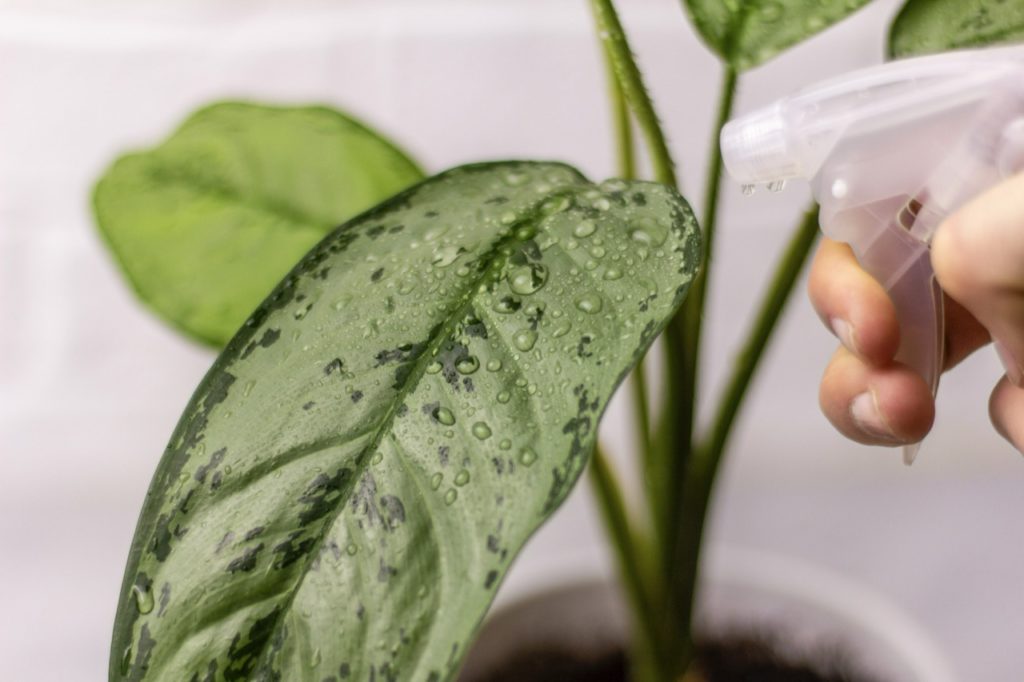
Check the pot regularly to make sure that the medium is not drying out.
Fertilising
It is a good idea, in addition to providing a fertile growing medium and mulching to feed colocasias that are growing in containers with a balanced, organic liquid feed, like compost tea or seaweed feed, every month or so while the plant is actively growing.
Common Pests & Problems
If the leaves on your colocasias are turning yellow, this can be a sign of a problem with watering or feeding.
Make sure that you are providing enough water and enough nutrients for your plants.
However, remember that leaves dying in autumn may simply be a sign that the plant is entering a period of dormancy, which it will do if temperatures fall below around 20°C.
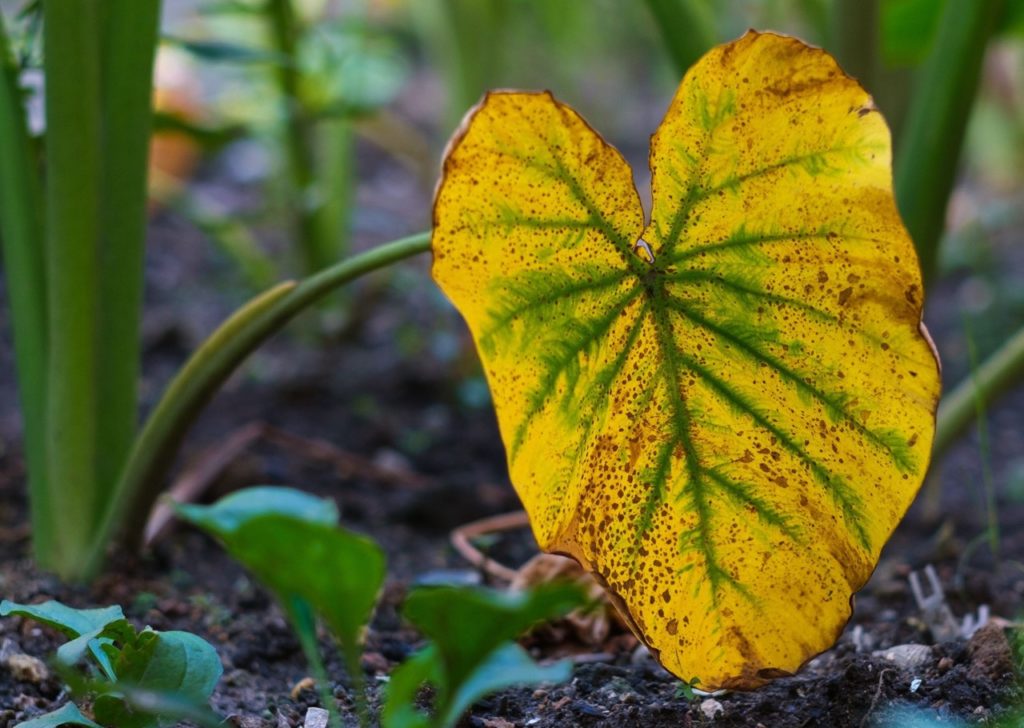
Colocasias can also encounter problems with common houseplant pests, like whitefly, and spider mites.
Make sure your houseplants are as healthy and happy as possible and take organic steps to protect your plants from severe infestations when growing colocasia indoors.
If you place your colocasia houseplants in the right spot and take care of their basic needs, you should not find them difficult to care for inside your home.
